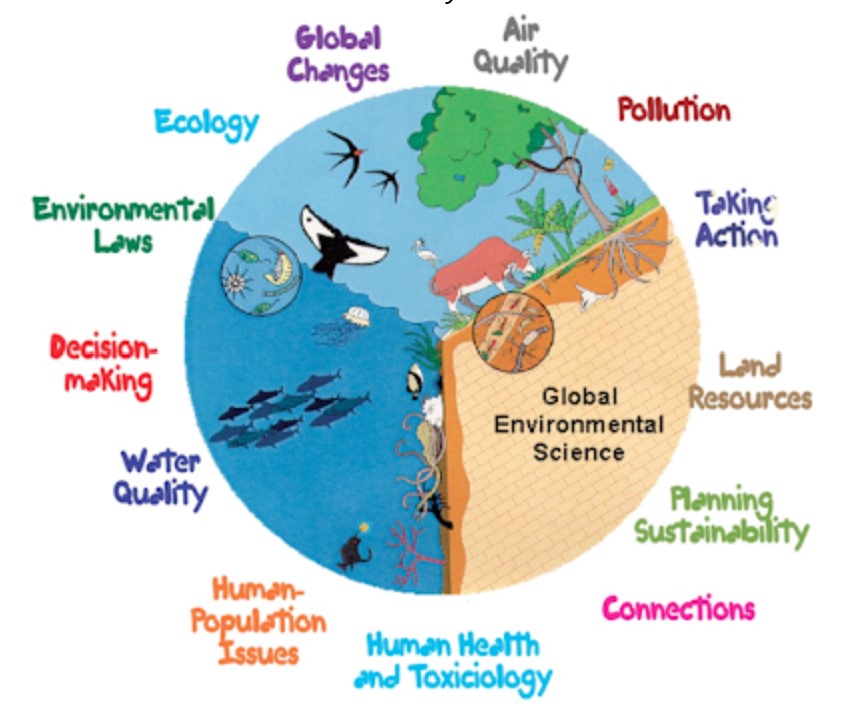Environmental Science Multiple Choice Questions
4 min read•january 15, 2021
Kanya Shah
AP Environmental Science ♻️
252 resourcesSee Units
Logistics of the MCQ Section:
This exam has 80 questions and you are allotted 1 hour and 30 minutes to answer them. That isn’t a lot of time for each question (4 choices per MCQ) because on average, you should spend about a minute per question. You need to finish the test so you may end up having to guess. Focus on getting through the section with the highest amount of accuracy and keep your eyes on the clock every couple pages. Most of the exam has set-based questions or questions that refer to documents/images and link corresponding questions based on the given references.
This portion is 60% of the total exam which is more than the FRQ section. That doesn’t mean that you should slack off on the FRQ section...the exam just places an emphasis on student capabilities of being able to catch inaccuracies in answer choices whereas on FRQs, you have to apply your conceptual knowledge to propose possible solutions or to support assertions provided based on data.
Topics that will be on the MCQ Portion:
Unit 1: The Living World: Ecosystems 6-8%
Unit 2: Living World: Biodiversity 6-8%
Unit 3: Populations 10-15%
Unit 4: Earth Systems and Resources 10-15%
Unit 5: Land and Water Use 10-15%
Unit 6: Energy Resources and Consumption 10-15%
Unit 7: Atmospheric Pollution 7-10%
Unit 8: Aquatic and Terrestrial Pollution 7-10%
Unit 9: Global Change 15-20%
How to ace the MCQ Section:
Figuring out the answer to a multiple choice question can be challenging, especially when you’re stuck between two choices that seem correct. So, how do you make the best decision? Look for a small loophole within the two answers and whichever answer seems more suspicious is what you should discard. Logically deduce whether the answer choice you picked fits in the given circumstances of the problem. Trust your instincts; if you really feel that one answer is correct, go with it.
Since this part of the exam puts a lot of weight on data analysis and conceptual exercises, make sure you know the content well and keep practicing with multiple choice questions. Practice makes perfect. The more exposure you get to content and practice problems, the better off you will be on the day of the AP exam because you don’t want to freak out on the exam and wish you had studied better.

Topics to Understand, Source: Mrs. K Science
MCQ Practice Questions
- Which worldview considers ecosystems to have intrinsic value?
- Anthropocentric
- Biocentric
- Ecocentric
A: II and III only
B: I and III only
C: II only
D: I only
Answer: The answer is A. A biocentric worldview is a worldview that holds that humans are one of many species on Earth, all of which have an equal intrinsic value. An ecocentric worldview is a worldview that places equal value on all living organisms and the ecosystems that they live in.
2) Ocean acidification represents a major factor of the following cycles.
A: nitrogen cycle
B: phosphorus cycle
C: sulfur cycle
D: carbon cycle
The answer is D. As the amount of carbon dioxide absorbed by the ocean increases, the ocean’s pH level becomes more acidic. Increased CO2 levels have caused chemical changes in the ocean.
3) Of the following options, which factor is more likely to increase biodiversity within a biome?
A: Disease Outbreak
B: Human Immigration
C: Landscape Fragmentation
D: Introduction of Invasive Species
The answer is D because by introducing invasive species to a certain habitat, you’re increasing the amount of different organisms in that specific region which ultimately contributes to biodiversity within a biome.
💡Find more multiple choice practice questions for AP Enviro inside these slides:
🗒AP Environmental Open Q and A Slides 2020 (starting at slide 8)
Final MCQ Tips:
Try to understand the science behind theories and concepts that you learn instead of memorizing facts or tidbits of information. It’ll help you in the long run because by creating a deeper understanding of content, you won’t have to worry about second guessing yourself as much on the MCQ section. Build your confidence in test taking by constantly doing practice questions for apes and other AP courses that you’re in because this section ultimately comes down to how well you grasped the content and whether you can justify your answer logically.
Don’t make the mistake of not asking for help when you’re stuck on certain concepts because the AP Exam will definitely have tricky questions and if you’re unsure about some concepts, it’ll hinder your ability to maximize how many questions you get right. Sometimes reading your textbook or an ebook to refresh your mind on topics that you don’t recall very well is resourceful but if it becomes too time consuming, find another route to study. Use videos, diagrams, study groups, review books, or anything that will help you revise the material. Don’t cram the night before the exam because it’ll only stress you out more. If you study consistently, you’ll certainly feel more confident when you walk into the testing room. Keep working hard with your goals in mind and you’ll achieve them. Good luck!
Source: AP Exam + The College Board & Frieland and Relyea Textbook for AP Environmental Science
Browse Study Guides By Unit
🏜Unit 1 – The Living World: Ecosystems
🐠Unit 2 – The Living World: Biodiversity
👪Unit 3 – Populations
🌏Unit 4 – Earth Systems & Resources
🏖Unit 5 – Land & Water Use
⚡️Unit 6 – Energy Resources & Consumption
💨Unit 7 – Atmospheric Pollution
♻️Unit 8 – Aquatic & Terrestrial Pollution
🔥Unit 9 – Global Change
🧐Multiple Choice Questions (MCQs)
✍️Free Response Questions (FRQs)
📆Big Reviews: Finals & Exam Prep

Fiveable
Resources
© 2023 Fiveable Inc. All rights reserved.